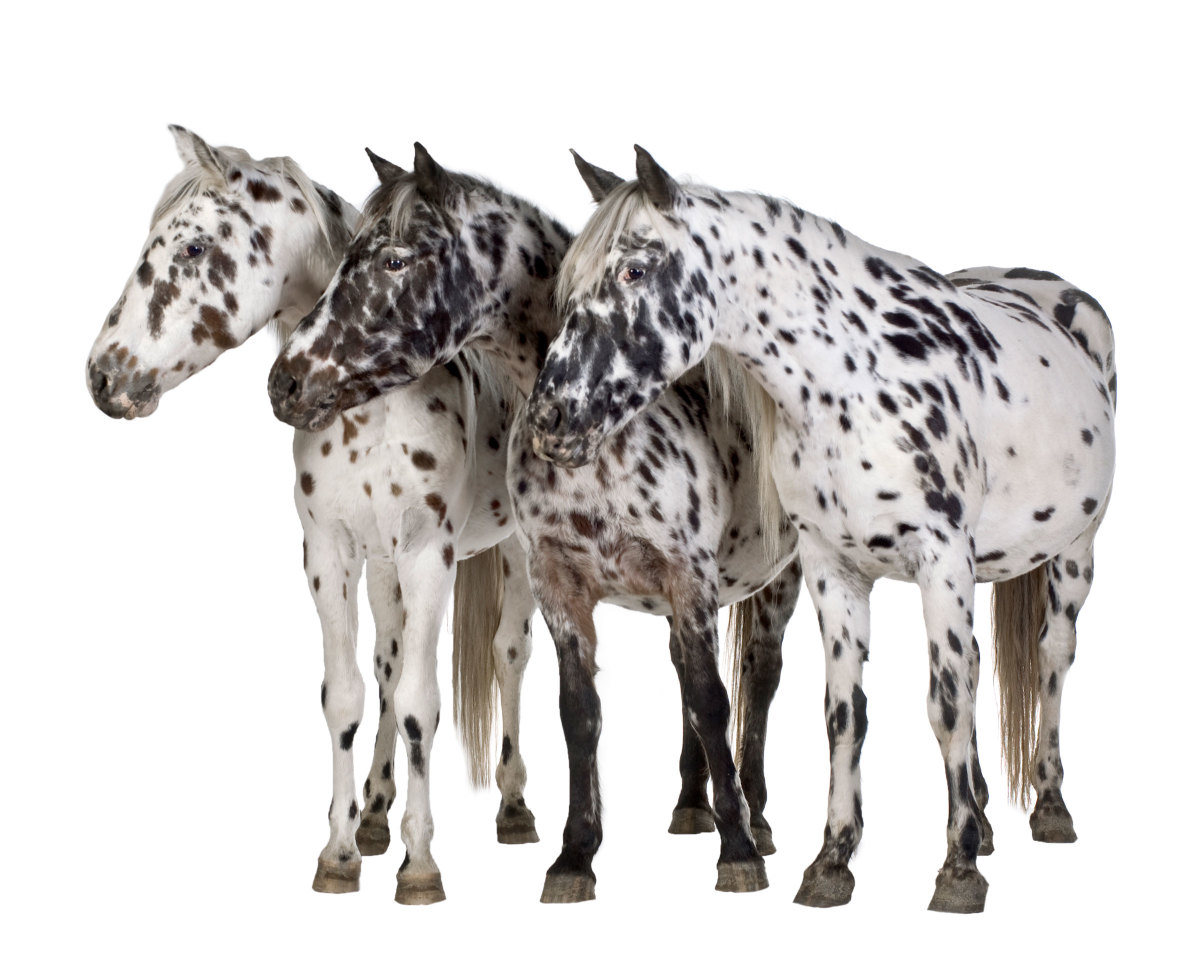
For clients purchasing or owning Appaloosa horses, it is helpful to have information to counsel them on the possibility of their horse developing equine recurrent uveitis (ERU or moon blindness). This is a common ocular problem of Appaloosas that can lead to blindness.
A study looked at risk factors that increase the probability for this occurrence [Sandemeyer, L.S.; Kingsley, N.B.; et al. Risk factors for equine recurrent uveitis in a population of Appaloosa horses in western Canada. Veterinary Ophthalmology Jan 2020; DOI:10.1111/vop.12749].
The frequency of ERU is reportedly higher in Appaloosas than other breeds, and its insidious progression is more severe and more likely to lead to blindness than in other breeds. Genetic markers have been identified with these cases, with potential links to coat color. There are reports that Appaloosas with more extensive white patterns are at greater risk for ERU.
The study reviewed is a retrospective study (2005-2017) at the Western College of Veterinary Medicine in Canada. The hospital population had an ERU prevalence higher in Appaloosas (13%) compared to other breeds (0.24%). Of all horses diagnosed with ERU in the hospital, Appaloosas comprised 62.5%.
Taking the study out of the hospital environment, board-certified veterinary ophthalmologists examined 145 Appaloosa horses on 11 breeding farms in western Canada to determine what specific risk factors might be relevant to the development of ERU. Eyes were classified as having no signs of ERU, mild, moderate, or those with severe signs. Of the 145 horses examined, 20 (14%) were confirmed with ERU, and 19/20 had bilateral lesions.
A summary of the research findings is as follows:
- There was no association between gender or base coat color and ERU.
- Age is a significant risk factor, with 12.3 years being the mean age of affected horses. For every year increase in age, the odds of ERU increased 1.15 times and eye damage increased 1.19 times.
- The leopard complex spotting genotype is at increased risk for ERU, and ocular damage tends to be more extensive.
- The extent of depigmentation with age does not appear to be a risk factor for ERU.
- Horses with the likelihood of developing ERU have an LP allele mutation that creates white spotting patterns on a continuum of coat patterns.
- As for coat pattern, ERU in this study occurred in 11% few-spots, 29% snowcap (white rump without spots), 15% leopard (all white with pigmented spots), 11% spotted blanket, and 13% in no patterning over the topline that roan with age.
- ERU was not found in the study horses with white flecks (discontinuous white specks over rump), lace blanket (small white pattern over the rump), or solid coloration that does not roan with age. (Solid horses do not have the LP allele.)
- A common ancestor was identified for 15/18 (83%) affected horses within eight generations, and five were inbred to that ancestor. The authors suggest that “additive genetic risk factors may be implicated in disease.”
Another important finding is that many horses have chronic, low-grade clinical signs that can go undetected until ERU ocular disease becomes more insidious and progressive. With that in mind, to avoid delay in diagnosis, it is important for Appaloosa horses to have frequent ophthalmic exams, particularly after 12 years of age.








